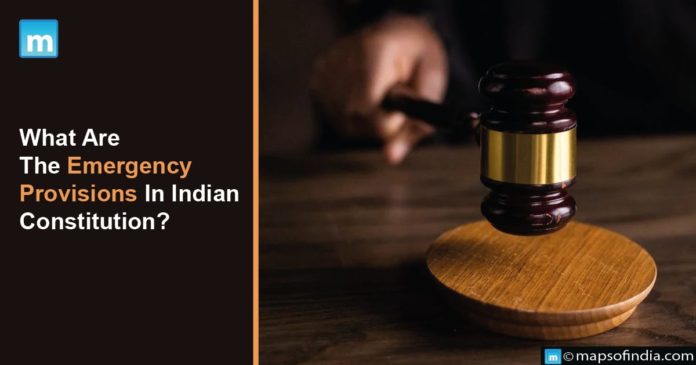The term “emergency” refers to an unanticipated turn of circumstances that requires government bodies to act immediately within their jurisdiction. In situations of emergency, all civil rights—except Articles 20 and 21 of the Constitution of India suspended inside the state or nation. The failure of administrative equipment causes the majority of emergencies.
According to Dr Bhimrao Rao Ambedkar, the Indian federal structure is distinctive in that it can become unitary when the institutional system breaks down. Additionally, the main goal of emergency legislative measures was to protect the area from dictatorship combined with the domestic disorder, conflicts, and foreign invasions.
Historical Background of Emergency Measures
When deciding the extreme circumstances within which the President of India may declare an emergency, the Constitution’s founders were presented with a conundrum. Caste discrimination, communalism, and religious hostility were detrimental throughout India’s pre-independence era.
A confrontation with Pakistan emerged after the ruler of Kashmir was overthrown. Hyderabad and Junagarh have expressed opposition to joining the Indian Union. The Indian government created Article 352 to address the problem and stop separatist activities. Socialist governments were emerging in India after independence, and the workers’ and peasants’ communist movements in Telangana were becoming more widespread. To shield legislative procedures from difficult situations and to assure protection, Article 356 was enacted.
To maintain the country’s financial condition, which was fast eroding, as well as its foreign currency holdings and institutions, Dr Bhimrao Rao Ambedkar eventually introduced Article 360 of the Indian Constitution, which deals with financial emergencies.
Types of emergency provisions in the Indian Constitution
The Indian Constitution distinguishes between three types of emergencies: state, national, and financial. The rules for emergencies in India are included in Part 18 of the Indian Constitution.
-
The National Emergency is defined by Article 352
Article 352 states that the President can proclaim an emergency when the territory of India is under invasion, foreign encroachment, or internal insurrection. Even though such a proclamation could only be issued in the legislative chamber’s attendance and with each house’s consent, the emergency was revoked after one month. The nation’s first emergency was proclaimed during the 1962–1968 confrontation with China. Following it, Smt. Indira Gandhi imposed the most controversial state of emergency due to domestic strife.
-
State emergencies are covered by Article 356 or President rule
According to Article 356, the President may proclaim a state of emergency if the Governor of a certain state submits a statement or if the President notices that the state’s governance structures are deteriorating under Smt. During Indira Gandhi’s presidency, 35 occurrences of presidential rule have been documented.
-
Financial Emergencies are covered under Article 360
The President may proclaim them if there is compelling proof of an unstable economy. Announcing a financial emergency is heavily influenced by executive and legislative variables. A comparable proclamation is to be maintained during the emergency period per Article 360. In India, there has never been a proclaimed financial emergency.
The 44th Constitutional Amendment altered how the Indian Constitution’s emergency measures, which had previously been implemented in 1975, limited the executive’s unfair power. The “armed insurrection” has become an “internal disturbance.” It is also made very clear that an emergency may only be declared by direct contact between cabinets. Additionally, the residents must have their emergency authorization renewed every six months. Moreover, a simple majority vote in both Houses may also lift the emergency.




